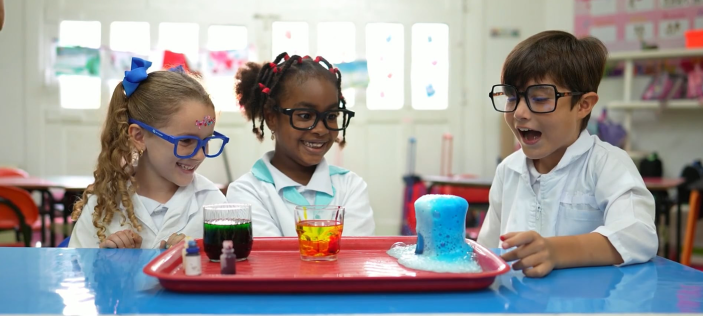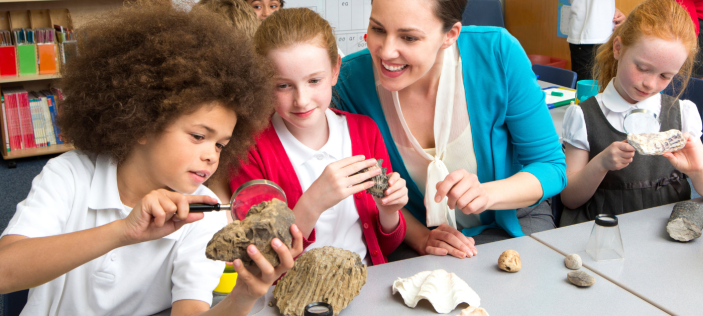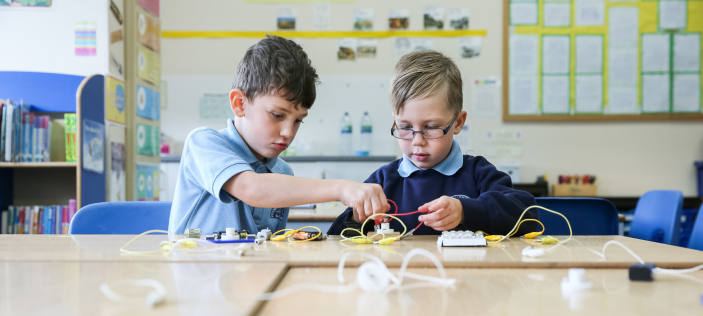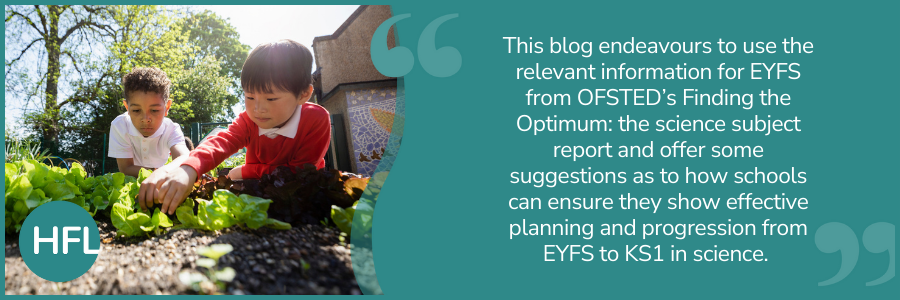
The transition from Early Years to Year 1 can be a big step for pupils and staff members alike. When thinking about the knowledge and skills the children need to move into Key Stage 1, schools should be thinking about progression through the school as well as allowing children to experience as many different opportunities as possible. For example, topics such as ‘Plants’ are done in many year groups, however, if each year group completed an enquiry on how to best grow a bean from its seed into a mature plant their experiences would be limited.
Therefore, it is important to think about the following:
- Progression from EYFS
- Any crossover between EYFS and Year 1
- Ensuring this is for a key purpose, or
- Ensuring this is to a different depth
- Ensuring the EYFS activities themselves have a clear focus.
This blog endeavours to use the relevant information for EYFS from OFSTED’s Finding the Optimum: the science subject report and offer some suggestions as to how schools can ensure they show effective planning and progression from EYFS to KS1 in science. The report focused on the teaching and learning of science across primary and secondary schools.
The highlighted sections have been taken directly from OFSTED’s Finding the Optimum: the science subject report (2 February 2023).
Children were generally introduced to a range of interesting phenomena in Reception. However, in some primary schools, the knowledge of the natural world that children were expected to learn in Reception was not clear enough. Often this was when curriculums simply identified general topic areas or activities for children to complete. This limited how effectively children were prepared for learning science in Year 1.
It is important that children in Reception have a key focus when undertaking an activity. This could be to learn something substantive e.g. some objects float and some objects sink or simply to be able to observe and describe what they can see. They may wish to ask questions about what they experience but not all questions have to be answered (as many concepts they may encounter in EYFS may be too far beyond their ability to understand at this point).
Recommendations
Ensure that the curriculum is specific about the knowledge that children in Reception should learn about understanding the world. This knowledge should connect with what pupils go on to learn in Year 1 science.
Statutory Framework for the early year's foundation stage
ELG: The Natural World
Children at the expected level of development will:
- explore the natural world around them, making observations and drawing pictures of animals and plants;
- know some similarities and differences between the natural world around them and contrasting environments, drawing on their experiences and what has been read in class;
- understand some important processes and changes in the natural world around them, including the seasons and changing states of matter
Topics from the Year 1 Programme of Study include the following:
Plants
- identify and name a variety of common wild and garden plants, including deciduous and evergreen trees
- identify and describe the basic structure of a variety of common flowering plants
- identify and name the roots, trunk, branches and leaves of trees
Animals, Including Humans
- identify and name a variety of common animals including fish, amphibians, reptiles, birds and mammals
- identify and name a variety of common animals that are carnivores, herbivores and omnivores
Seasonal Change
- observe changes across the four seasons
- observe and describe weather associated with the seasons and how day length varies.
Materials
- distinguish between and object and the material from which it is made
- identify and name a variety of everyday materials, including wood, metal, plastic, glass, water and rock,
- describe the simple physical properties of a variety of everyday materials
- compare and group together a variety of everyday materials based on their simple properties
You can see that there is a lot of crossover between EYFS and Year 1 in terms of topics and thus it is important for opportunities across the Key Stages to be varied to fully develop children’s understanding. New learning is fragile and is best embedded through many linked experiences. Allowing children the opportunities to grow many different types of plants, for example, will allow them to use similar skills in new contexts.
It can also allow them the opportunity to do the following:
- link their learning to literacy through many fantastic texts (Bloom, The Gigantic Turnip, Ten Seeds, From Seed to Sunflower, A Seed is Sleepy, Sunflower Shoots and Muddy Boots and many, many more)
- link their learning to maths in terms of measuring the height (using non-standard measures – how many cubes tall, how many cars tall?)
- link their learning to art in terms of sketching the different flowers they see
The more directed opportunities the children are given, the more transferrable their knowledge and understanding will be.
However, this is not just knowledge-based. The children’s Working Scientifically Skills should also be developed in EYFS. A good visual representation can be found in HFL’s working scientifically wheel for EYFS:
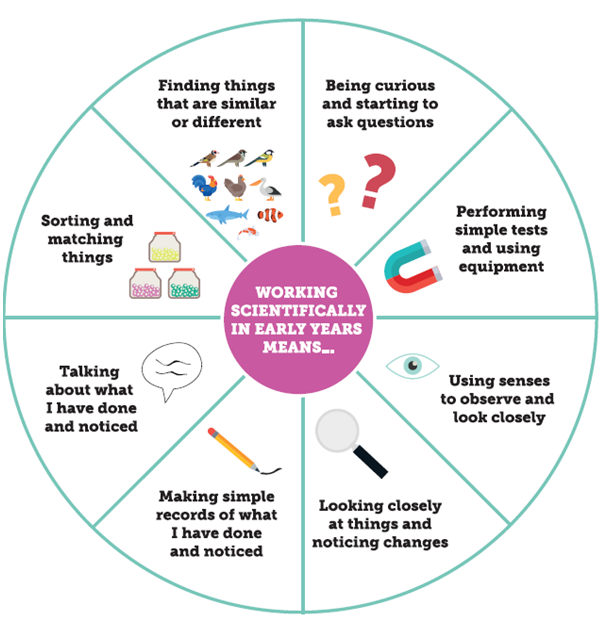
This tool can help EYFS teachers to focus their units/activities around the working scientifically skills and preparing these skills for use in Year 1.
Sometimes, leaders used commercial curriculum plans that began in Year 1. They used a different curriculum resource for Reception. However, they did not ensure that these 2 curriculums were coherent, and that the Year 1 science curriculum built on what children had learned in Reception.
This can be a challenge across the curriculum, but particularly in science due to the overlap of subjects and very specific national curriculum requirements at each stage. It is important to ensure the mapping of EYFS enquiries and the specific focus of each in order to ensure children are ready to progress to Year 1 and that the same activities are not revisited without a clear purpose.
Vocabulary
It is equally important that when new units are introduced to children in reception, that the correct vocabulary is being used. Some units that may include magnets, forces, electricity, heating and cooling for example, are units that won’t be covered again until Key Stage 2. Therefore, when looking for correct vocabulary, it is important to look at the requirements for those units and plan accordingly. There was an example in a recent report that stated children in Year 3 who were studying magnets were using the word ‘sticking’ to describe ‘attraction’ and that this misconception was not acted upon. It is important that children are exposed to the correct terminology (as appropriate for primary) and that it is modelled correctly to ensure we are not perpetuating misconceptions. The focus here is not on early years children using this terminology at this point, but on exposing them to correct vocabulary that will support their learning throughout the curriculum.
Resources to help
- The EYFS Matrices from PLAN Assessment have a great range of activities to undertake in the Early Years and focus on building the knowledge and experience necessary to progress into the KS1 and KS2 curriculums. Used alongside the KS1 and KS2 knowledge matrices, it is a clear way to show progression from EYFS – Year 6.
- Primary Science Education Consultancy also has a document that shows progression in Growing Plants from EYFS to Year 6 with a different focus in each year group (including experiencing growing different
- Explorify has introduced a set of activities geared specifically towards EYFS
- Primary Science Teaching Trust, play observe ask- provision maps with activities to support learning in EYFS
- HFL working scientifically wheels
Top Tips for EYFS to keep in mind
- Ensure a clear focus for each activity (why are the children doing this – what are you intending for them to get out of it?)
- Ensure exposure to age-appropriate scientific vocabulary (so we don’t perpetuate misconceptions later in the curriculum)
- Ensure progression between year groups (different experiences allow children to apply their knowledge and understanding to new situations)
Introduce the working scientifically skills in Reception so children begin building an awareness of the skills they are using
Voices from the Classroom
Our new blog series, Voices from the Classroom, allows primary science teachers to share particularly effective practical experiences they have had with their classes. It’s a great way to showcase what your school is doing and written guidance and examples are available for those of you wishing to participate.
If this is something you would be interested in participating in, please e-mail Charlotte Jackson charlotte.jackson@hfleducation.org
